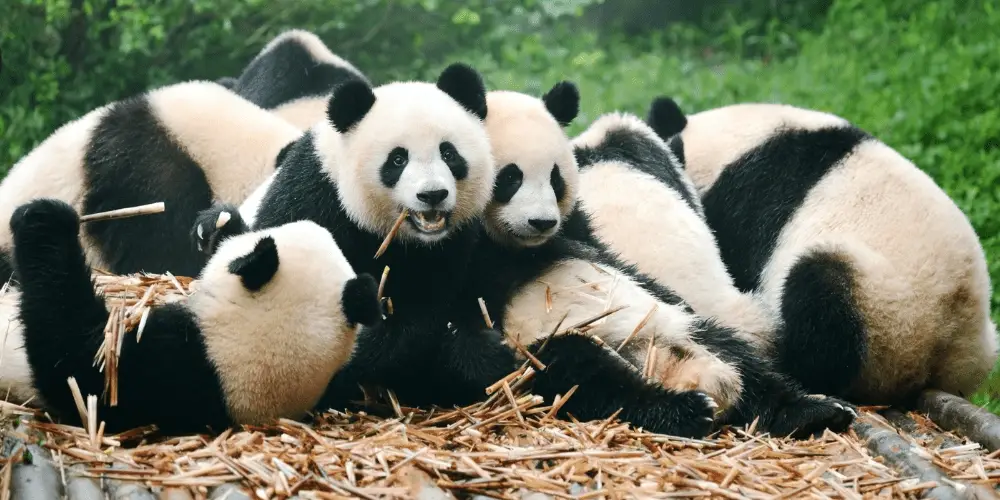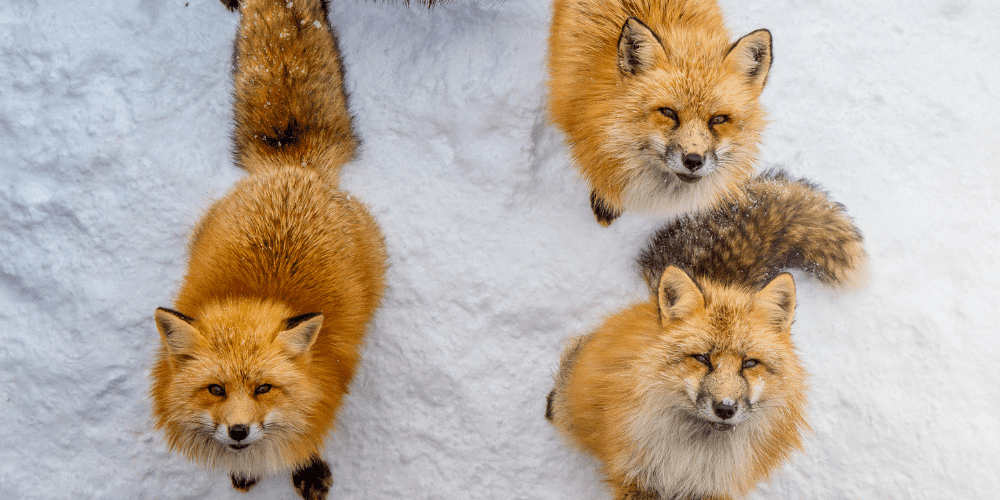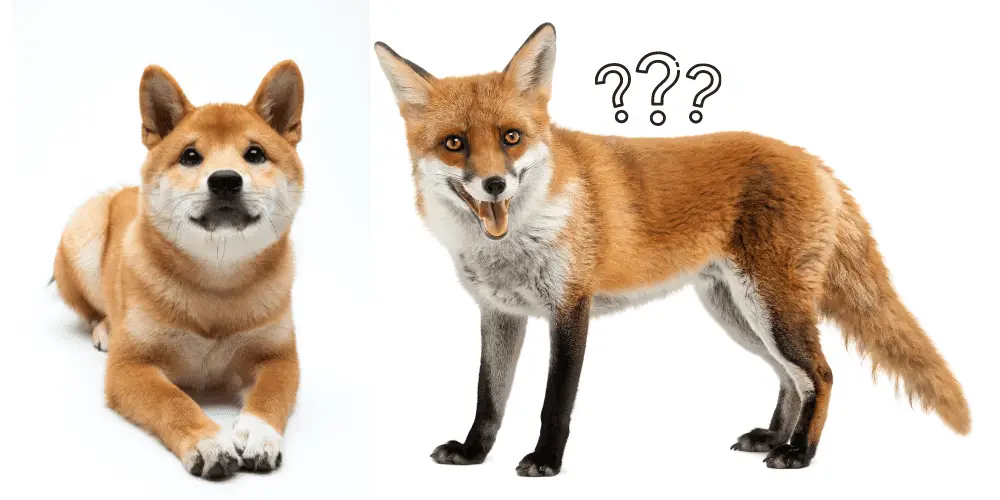Certain words have become associated with the sight or thoughts of panda bears- among them are cute, adorable, lazy, or even endangered. But if you were to have the privilege of spotting them, what would a group of pandas be called?
There are at least three different names to describe a group of pandas; a bamboo of pandas, an embarrassment of pandas, and a cupboard of pandas. Of the three names, “embarrassment” is most widely used to describe a group of pandas, though it isn’t often that they travel in groups.
Why is a Group of Pandas Called an Embarrassment?
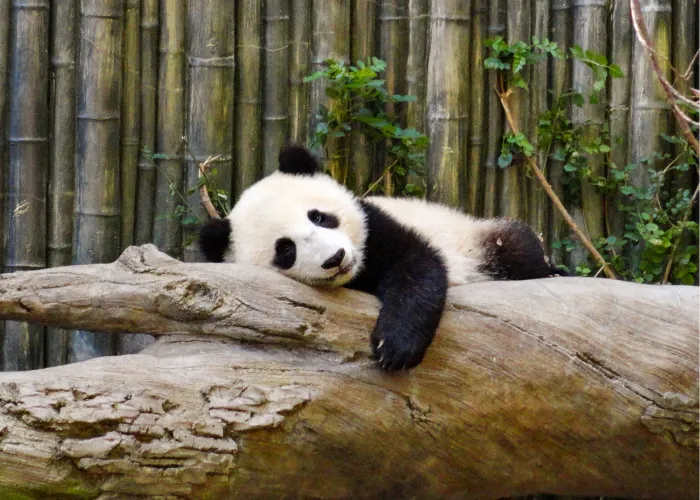
A group of Pandas is called an “embarrassment” probably because of their lazy and carefree appearance.
Why is a Group of Pandas Called a Bamboo of Pandas?
Perhaps “bamboo” is used to playfully reference their staple diet.
Why is a Group of Pandas Called a Cupboard of Pandas?
A“cupboard” of Pandas- who knows?
There doesn’t seem to be any solid reason for the different names, unlike other animals.
The reasoning behind each of these terms has been lost to time and is anyone’s guess.
However, when you look into different names given to specific groups of animals, this is not uncommon.
Types of Pandas
Most people outside of China aren’t aware that there is more than one type of panda bear- chiefly two types- the Giant Panda and the Red Panda.
Giant Pandas
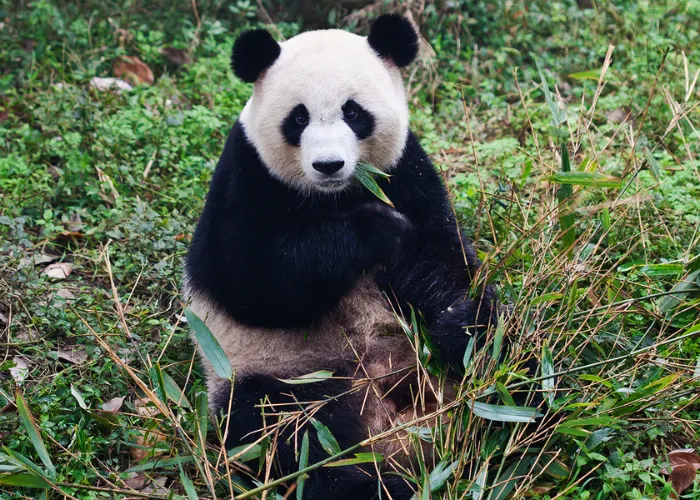
Giant Pandas are the type that instantly enters the mind when you hear mention of a panda. Black and white coat, about the size of a black bear, round black ears, and eyes dawning a raccoon-like mask.
The Giant Panda can grow to weigh up to about 280 pounds and stand about 3 feet at the shoulder. If they decide to stand up, an average size male can stand at about 6 feet tall.
Red Pandas
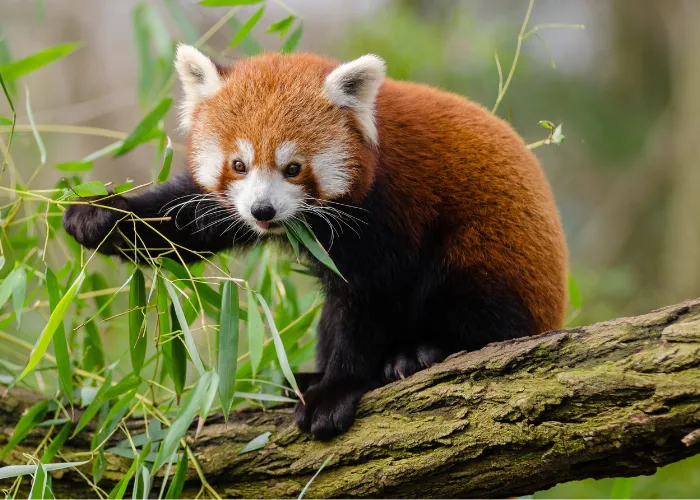
Red Pandas are just a portion of the size of their giant cousins, and because of this, they’re often referred to as the “lesser” pandas. Unlike Giant Pandas, Red Pandas have reddish-brown fur on their upper body with their underbelly and legs colored black. Their mask, muzzle, brow, and inner ear are all covered in white.
Red Pandas can weigh up to about 17 pounds and can grow around 25 inches long. This panda variety has a long raccoon-like tail that is reddish-brown at the base and evolves into a striped pattern as you go up the tail. The tip of the tail is black.
Are the Red and Giant Pandas Related?
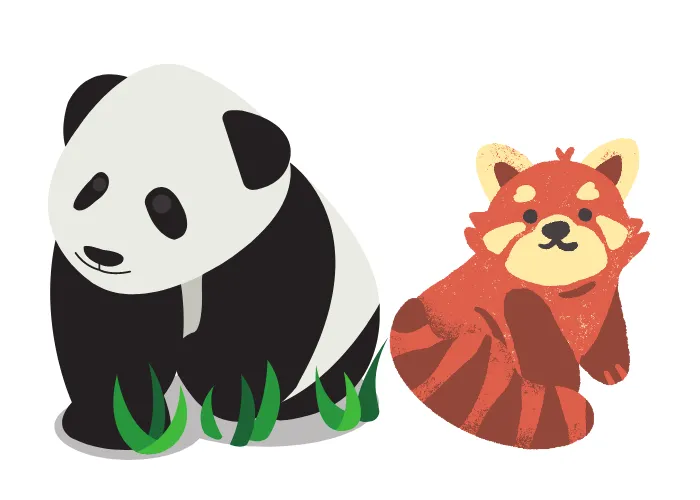
Despite sharing the same name, the Red and Giant Pandas are two different types of animals.
Aside from slight similarities in appearance (depending on how you look at them), the only thing that they have in common is their staple diet of bamboo (Panda is believed to be derived from the Nepali word “ponya,” which means “bamboo eater” or “bamboo footed.”).
Giant Pandas are strictly categorized as bears, and Red Pandas are more closely related to skunks, raccoons, and weasels. Despite many years’ worth of genetic research, scientists are still debating what exactly a Red Panda should be classified.
For the remainder of this article, when using the term “panda,” I’ll be referring to the Giant Panda Bear.
Are Pandas Intelligent?

Though panda bears might not appear to be the sharpest knife in the drawer compared to more active bears, they aren’t nearly as clueless as they make themselves look.
They are intelligent animals, and some would even describe them as cunning. Appearances tend to make a difference when one judges whether or not an animal is intelligent or not. Lounging about, looking almost slotherly, clumsy, or silly, doesn’t scream “smarts” to an onlooker.
However, they are inquisitive and have shown to be great problem solvers. There are even stories about pandas teaming up to figure out ways to escape zoo enclosures!
Do Pandas Only Eat Bamboo?

Like all bears, pandas (Giant Pandas specifically) are omnivorous and designed to eat and digest plants and meat. However, nobody told the panda.
Pandas eat nothing but bamboo- all day if they’re left to it. Despite having a system designed for meat, pandas effectively get all the nutrients they need by feasting off of young bamboo shoots of different types, each containing other proteins and nutrients.
Mating seasons also impact the types of bamboo they eat, as they travel to different destinations for such purposes.
These various destinations will likely have a different breed of bamboo to cover anything that might be lacking from a panda’s diet from a previous location.
Would Pandas Attack Humans?
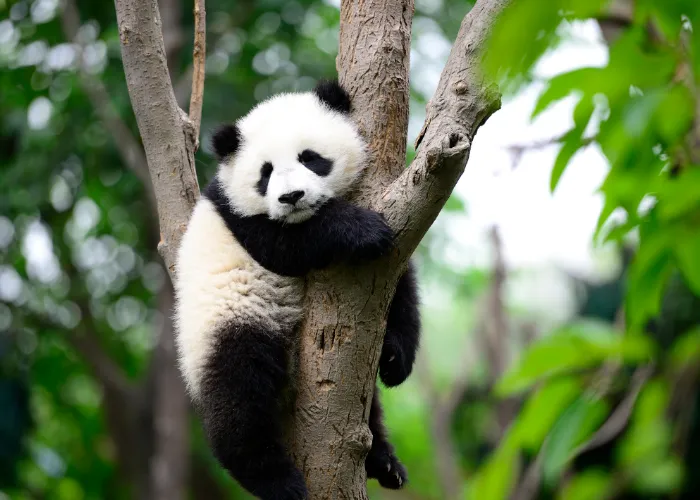
Who could ever think of such a thing? A cute, adorable, and friendly-looking panda bear hurting anyone?
Well, not only can it happen, but it has happened. Pandas are solitary creatures, as are most bears, and they tend to shy away from humans.
But pandas are still dangerous animals, with all of the tools at their disposal that black bears or other similarly sized bears have.
Cases of pandas attacking humans are rare, but they do exist. However, it is more likely for someone to be attacked by a panda at the zoo than it is in the wild.
When they’re penned up at the zoo, they have no means of escape and don’t have the option to move along and find the solitude it wants.
Also, an enormous underestimation in the minds of visitors may provoke an attack, as cuteness might cause onlookers to get their limbs a little too close, ending in serious injury or even death.
But in the wild, pandas would most likely move along if humans were to show up. They’d rather flee than exert the energy it would take to stand its ground- unless its young is a concern. In that case, all bets are off.
Final Thoughts

Panda bears are an animal that has faced extinction for quite some time now. Fortunately, through the efforts of humane societies and activists, their numbers have stabilized, but they are still in dangerous waters.
There are under three thousand bears accounted for in existence right now, which isn’t as robust as activists and scientists would like to see for this breed of a bear to flourish.
Hopefully, in time and through the cooperation of humans, this beautiful creature will break free from the threat of endangerment.
RELATED ARTICLE: Are Pandas Marsupials?

